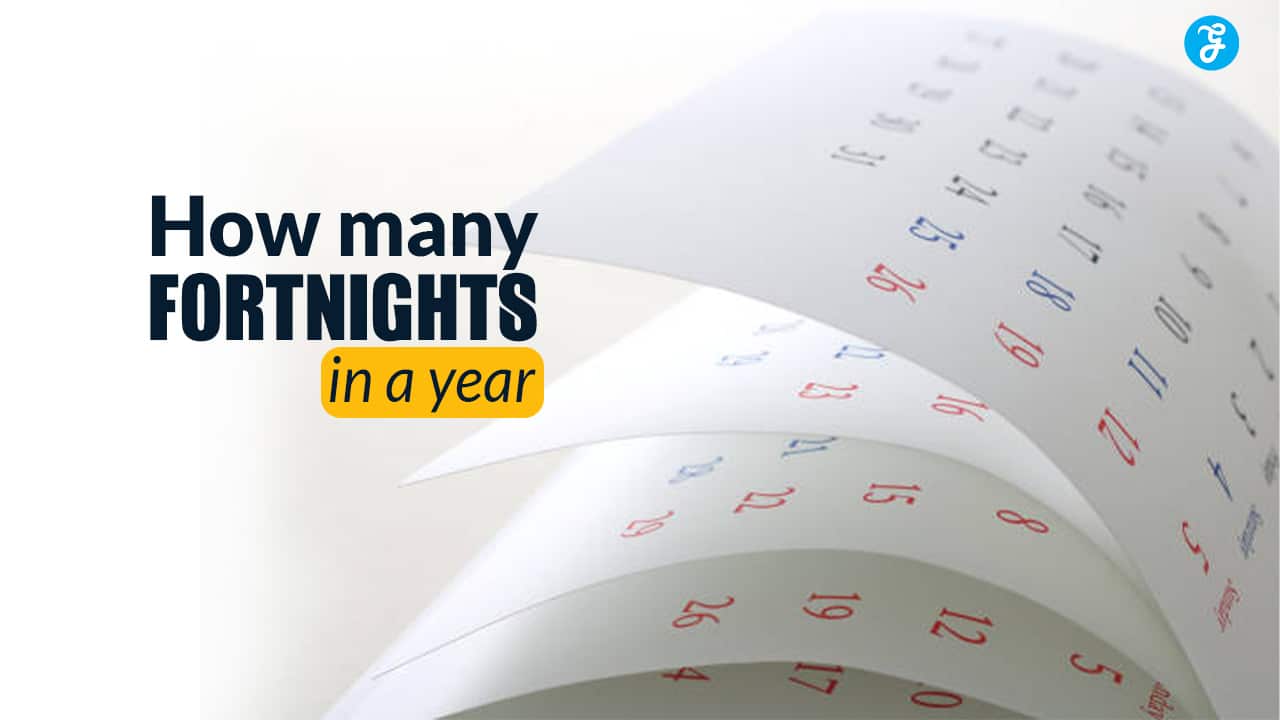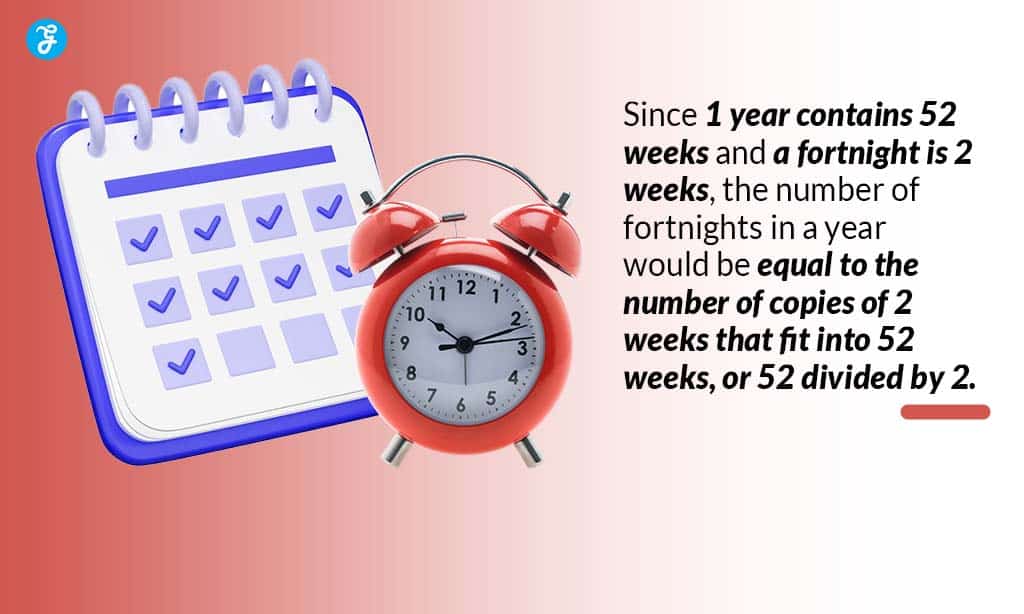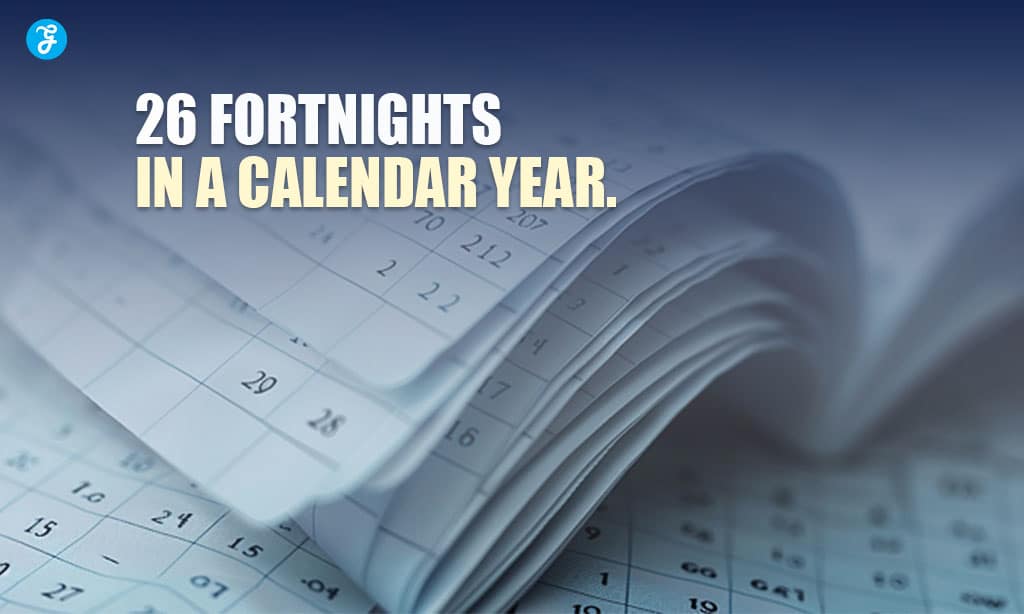Figuring out time can be tricky. Many people wonder about “how many fortnights in a year”. A fortnight means 14 days. This fact helps us plan our time better.
We will show you how to count fortnights in a year. You’ll see it’s not hard. Keep reading to learn more!
Understanding Fortnights
Fortnights are two weeks long. People used them a lot in the past to track time.
Definition of a Fortnight
A fortnight is 14 days. It comes from Old English “fēowertyne niht,” which means fourteen nights. This term tells us how people in the past counted time, not by days but by nights.
So, a fortnight equals two weeks exactly.
Historical Use and Relevance
Long ago, people measured time in fortnights. This term comes from “fourteen nights,” or two weeks. Folks used it for farming and to set up meetings. They looked at the moon and counted days.
This way of counting helped them plan better. It was easier than using only months or years. They could split the year into 26 parts. This made work on farms simpler. It also helped with early tax systems and trade schedules between towns.
Calculating How Many Fortnights in a Year
To find out how many fortnights are in a year, start by knowing there are 365 days most times. Divide those days by 14, and you get your answer—about 26 fortnights in a regular year.
Number of Days in a Year
A year has 365 days. This is true for most years. But every four years, there is a leap year. A leap year has 366 days. The extra day adds to February, making it 29 days long instead of 28.
This helps our calendar stay in line with the Earth’s orbit around the sun.
These numbers are key for timekeeping and planning things like tax returns or salary payments. Knowing if it’s a regular year or a leap year can change how we plan our time and work on taxes or pay schedules for ourselves or payees.
Conversion to Fortnights
Let’s do the math. You need to know how many fortnights are in a year. Here’s a simple breakdown:
| Number of Days in a Year | Days in a Fortnight | Fortnights in a Year |
|---|---|---|
| 365 | 14 | 26.07 |
So, we use a simple formula: 365 days divided by 14. This gives us about 26.07 fortnights in a regular year. But let’s not forget leap years. They add an extra day. That means about 26.1 fortnights every four years. This precise count helps in planning and scheduling over long periods. Fortnights offer a different way to view our calendar, making it easier to manage tasks and events.
Fortnights in Modern Times
Fortnights still play a role today. People use them for planning work schedules and budgeting their money.
Practical Uses Today
People use fortnights in planning their time now. Some workers get wages every two weeks, which equals one fortnight. This helps them manage money better. Schools and businesses also plan tasks in fortnights.
They set goals to finish work or study chapters within 14 days.
Fortnights help with taxes too. Every two weeks, people can check how much tax they owe or need back. This makes dealing with withholding tax easier for everyone involved. So, using a fortnight system simplifies many parts of life today, from earning to learning and taxes.
Fortnights and Planning
Fortnights help plan better. They turn big tasks into small steps.
- Save money in bits. Think about setting aside a little every fortnight for big buys or holidays.
- Plan projects at work with clear two-week goals. This breaks up the work and keeps the team on target.
- Keep track of tax rate changes. If they change every fortnight, you know when to check and adjust.
- Use fortnights to set fitness goals. Aim to walk more steps or lift more weight every two weeks.
- Break down learning new skills into fortnightly chunks. It makes big topics seem less scary.
- Organize your social media posts by planning them a fortnight ahead.
- Pay bills every two weeks to keep on top of your finances better.
- Check your privacy settings on online accounts every fortnight to stay safe.
- Use fortnights to review and reset personal goals, keeping motivation high.
With this approach, managing both personal and professional tasks becomes clearer and less overwhelming.
Fortnights and Your Calendar
Putting fortnights on your calendar makes planning easy. It turns big tasks into small pieces.
Visualizing Fortnights
Seeing fortnights in your calendar makes planning easier. A year has 26 fortnights or two-week spans.
- Mark every second Monday on your calendar as the start of a new fortnight.
- Use colors to highlight these two-week periods; this helps you see them at a glance.
- Create stickers or symbols for important events that fall within a fortnight.
- Split big goals into smaller tasks and assign them to different fortnights.
- Set reminders at the beginning and middle of each fortnight to review plans.
- Share this fortnight view with family or team members for group activities.
- Keep track, visually, of how many fortnights have passed and how many are left in the year.
This method ensures you make the most out of those 52 weeks, breaking them into manageable chunks of time.
Integrating into Personal and Professional Planning
Integrating fortnights into your planning makes tasks easier. This method helps in both personal and professional life.
- Break goals into 14-day steps. Think about short-term aims, such as finishing a project.
- Use visual aids like calendars to mark each fortnight. It shows progress over time.
- Plan vacations or breaks every few weeks. This offers rest periods for recovery.
- In work projects, align tasks with fortnights. It creates clear deadlines and improves teamwork.
- For budgeting, track expenses in fortnightly periods. It simplifies managing money.
- Set learning goals every fortnight for new skills or hobbies. This keeps the brain active.
- Organize home cleaning and maintenance by dividing chores into fortnight slots. It keeps the house in order without feeling overwhelmed.
- Health goals can follow a fortnight schedule, like increasing exercise step by step.
This strategy ensures tasks are manageable and goals are met on time
Takeaways
So, we find out a year holds 26 fortnights. That’s 14 days per slot, making sense of time in chunks. This old way fits today’s plans too. From budgets to tasks, it proves useful. Knowing this helps us organize better and see our year clearly—chunk by chunk.








































